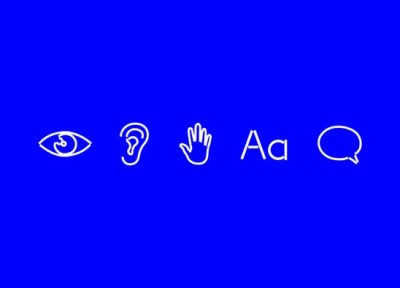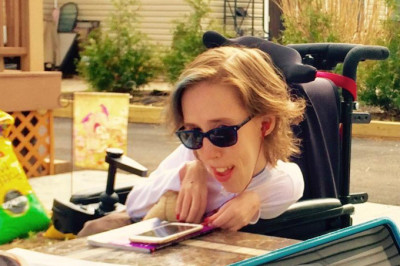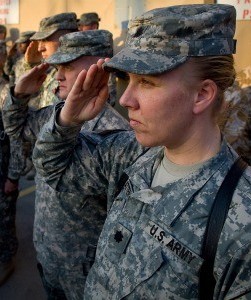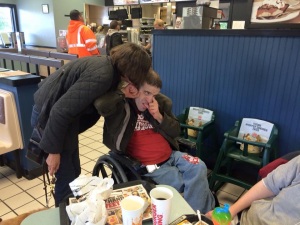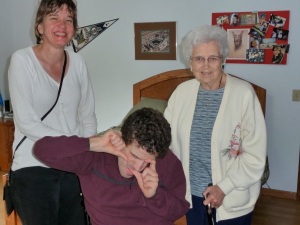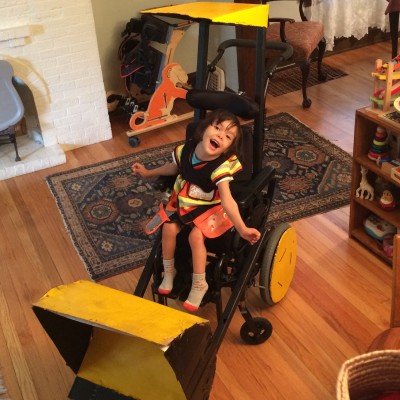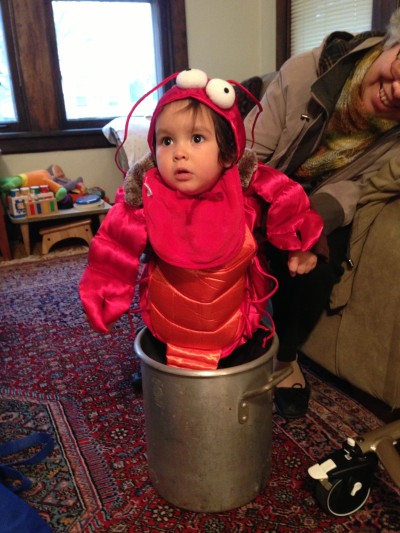Swimming for people with disabilities
by Beth Finke
 I swim for exercise. My Seeing Eye dog Whitney guides me to the pool, and the only stroke I do is the crawl. One arm or another is extended in front at all times, protecting me from crashing my head into a wall. Tapping the lane marker on every other stroke keeps me swimming straight.
I swim for exercise. My Seeing Eye dog Whitney guides me to the pool, and the only stroke I do is the crawl. One arm or another is extended in front at all times, protecting me from crashing my head into a wall. Tapping the lane marker on every other stroke keeps me swimming straight.
I like to swim. It’s a form of exercise I can do all by myself. I don’t need to tie myself (literally!) to a sighted runner, or pedal behind the lead on a tandem bicycle. Another thing: My friends who work out lifting weights, or running, tend to get hurt. Not me. Swimming is low-impact, safe. And now, with Thanksgiving around the corner, I’m adjusting my schedule this week to make more time to swim laps. I figure the more I swim, the more I can eat.
Many people with disabilities choose swimming as a form of exercise for those same reasons. A post on the Endless capABILITIES blog points out that people with Down Syndrome, autism, and ADHD (Attention Deficit Hyperactivity Disorder) often find that swimming can provide a range of cognitive and physical benefits. “Plus, provided there is a qualified instructor on hand, swimming is an extremely low-risk activity.”
The post devotes specific ways swimming can help people with each of those three conditions – a few paragraphs with specific ways people with Down Syndrome can benefit from swimming, a few paragraphs devoted to people who have been diagnosed with ADHD, and then these last couple of particularly poignant paragraphs about the benefits swimming can bring to children who have autism:
Often children with autism struggle with that daunting theater of team sports, such as soccer and basketball.
However swimming is very much an individual pursuit without the stressful pressures of group competition.
What’s more, statistics show that drowning is a very common cause of death for autistic children, so teaching them to swim provides huge safety benefits.
My favorite line of that entire post came from the paragraphs about ADHD. I’m heading to the pool myself now (well, with Whitney, of course!) and will leave you here with that line. “As a youngster, Michael Phelps, for example, was diagnosed with ADHD,” it says. “And we all know what happened to that young man…”
Get active with us! See Easter Seals recreational activities and camps for people with disabilities.







